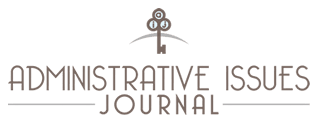
Abstract
With growing pressure on school administrators to close the achievement gap for English language learners, two-way immersion programs are being considered in increasing numbers across the nation. In this program design, language minority children are placed in classrooms with native English speakers and both groups of children learn and achieve in both languages. In well-designed programs the outcomes show that the program produces academic achievement across the curriculum that is equal or better than students educated in monolingual classrooms on standardized tests in English. Plus they also enjoy the benefits of becoming balanced bilinguals. This report reviews the literature on the rationale, challenges and considerations for administrators seeking to implement two-way dual language programs.
Recommended Citation
Haulman, April and Lopez, Regina
(2011)
"Designing and Implementing Two-way, Dual Language Programs: Issues to Consider,"
Administrative Issues Journal: Vol. 1:
Iss.
3, Article 10.
Available at:
https://dc.swosu.edu/aij/vol1/iss3/10
Included in
Health and Medical Administration Commons, Higher Education Administration Commons, Public Administration Commons
Please consider contributing an article to Administrative Issues Journal, our submission policy: http://www.swosu.edu/academics/aij/guidelines.aspx
